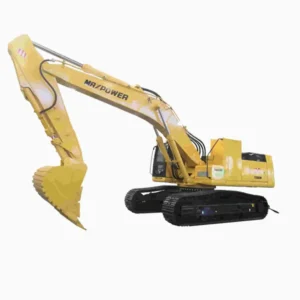Excavator teeth and shanks are essential tools for a variety of construction projects. From demolition to trenching, backfilling, and more, excavators provide the power and precision needed to get your job done quickly and safely. However, before you ever use an excavator, there are several preparations that need to be completed in order to ensure that the job is done correctly. In this blog post, we’ll explore seven preparations you should make before using excavator teeth and shanks. Read on to learn more!
Choose the right excavator teeth and shanks for your project

If you’re planning on using حفارة teeth and shanks, it’s important to choose the right ones for your project. There are a few things to consider when making your selection, including the type of soil you’ll be working in, the size of the area you’re excavating, and the depth of the excavation.
The type of soil you’ll be working in is one of the most important factors to consider when choosing excavator teeth and shanks. Different soils require different types of teeth and shanks. For example, sand or loam soils are best suited for teeth with wide tips, while clay or hardpacked soils require teeth with sharp, pointed tips.
The size of the area you’re excavating is another important consideration. If you’re working in a large area, you’ll need a larger set of teeth and shanks. Conversely, if you’re only excavating a small area, you can get away with a smaller set.
Finally, consider the depth of your excavation. Deeper excavations will require longer shanks so that the teeth can reach the bottom of the hole. Shorter shanks are better suited for shallower holes.
Consider the weight and size of the excavator you’re using
If you’re using an excavator, it’s important to consider the weight and size of the machine. Make sure the excavator is on level ground and that the tracks are aligned properly. Check the oil level and make sure the fuel tank is full.
Make sure you have enough teeth and shanks for your project
If you’re planning on using excavator teeth and shanks for your next project, it’s important to make sure that you have enough of both to get the job done. Here are a few things to keep in mind:
-The number of teeth and shanks you’ll need will depend on the size and scope of your project. Make sure to take these into account when planning your purchase.
-It’s always better to err on the side of caution and buy more than you think you’ll need. This way, you won’t have to stop in the middle of your project to order more supplies.
-Teeth and shanks can be expensive, so it’s important to budget accordingly. Don’t forget to factor in shipping costs if you’re buying online.
By following these simple tips, you can be sure that you have all the supplies you need to get the job done right.
Check the condition of your excavator’s teeth and shanks
It’s important to check the condition of your excavator’s teeth and shanks before using them. Here are a few things to look for:
1. Check for wear and tear. Look for any signs of wear and tear on the teeth or shanks. If you see any, it’s important to replace them before using the excavator.
2. Check for damage. Inspect the teeth and shanks for any damage. If you see any cracks, chips, or other damage, it’s important to repair or replace the damaged parts before using the excavator.
3. Check for proper installation. Make sure that the teeth and shanks are properly installed on the excavator. If they’re not, it could lead to problems when using the excavator.
Replace any damaged or worn out teeth or shanks before starting your project

It’s very important to inspect your excavator teeth and shanks before starting any project. If you notice any damage or wear, it’s best to replace those parts before continuing. This will help ensure that your project goes smoothly and you don’t run into any issues.
Follow the manufacturer’s instructions for installation and use
If you are planning to use excavator teeth and shanks, it is important to follow the manufacturer’s instructions for installation and use. This will ensure that you get the best performance from your equipment and avoid any potential safety issues.
When installing excavator teeth, be sure to follow the manufacturer’s directions carefully. It is important to properly secure the teeth in order to avoid damage to the equipment or injury to yourself or others.
Once the teeth are installed, be sure to read the manufacturer’s instructions for use. This will help you understand how to operate the equipment safely and effectively. If you have any questions about using excavator teeth or shanks, be sure to ask a qualified professional for assistance.
خاتمة
Taking the time to plan and prepare before using excavator teeth and shanks is essential for ensuring optimal performance. By following these seven steps, you can ensure that your equipment is properly cared for and ready for use. Doing so will maximize your safety, extend the life of your excavator teeth and shanks, and help get it up-and-running much more efficiently. With all of these benefits in mind, there’s no excuse not to follow these tips!






-150x150.webp)
